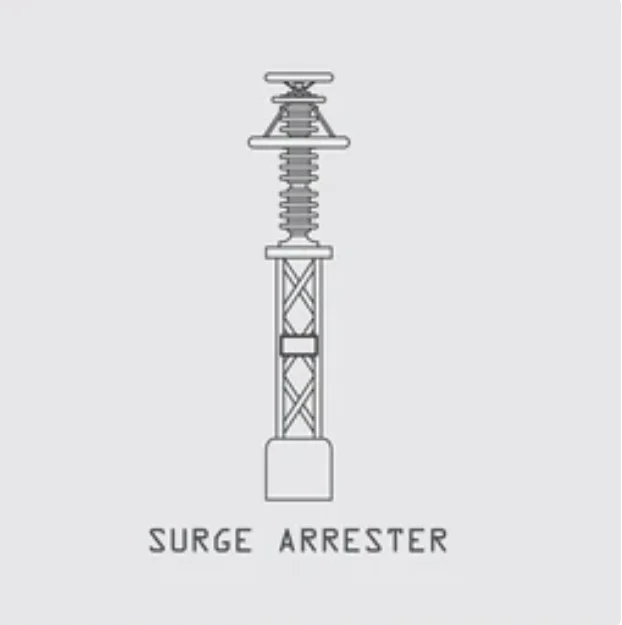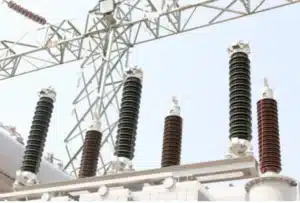A surge arrester is a crucial device that protects sensitive electrical equipment by arresting and discharging sudden surge currents caused by external events like lightning or internal switching forces within a system. Many people often confuse it with lightning arresters, but while lightning arresters are installed outdoors, a surge arrester is always installed indoors to act as a barrier against unpredictable voltage spikes.
Known as an SPD (surge protection device) or sometimes a surge suppressor (TVSS), it ensures that unexpected currents don’t damage critical systems, keeping power distribution safe and stable. Its function is simple yet vital, acting as a safeguard against both man-made and natural electrical disturbances.
In this article, we’ll explain what a surge arrester is, how it works, types and their functions, and why it’s essential for safeguarding your home. Plus, we’ll help you understand the key differences between surge arresters and surge protectors so you can make the right choice for your electrical safety.

How Surge Arresters Protect Your Electrical Systems
In every electrical setup, whether in appliances, industrial devices, or residential systems, stable voltage levels are crucial. However, real-world conditions often lead to fluctuations in operating voltages, which can be attributed to factors like poor power supply, corroded or loose connection in a house or building, and wiring issues.
More severe threats come from lightning storms, switching over voltages, and external interference that can exceed the recommended range, resulting in high voltage spikes. If the received surge surpasses the normal band, sensitive internal components may get damaged, potentially causing a malfunction or even a catastrophic blow to the system.
This is where surge arresters come in. Designed to protect electrical systems from unpredictable surges, they either divert excess energy or clamp it down to minimize damage. When a sudden high voltage surge occurs, such as during a direct strike in the vicinity, the arrester redirects the excess energy through a conductor and safely into the ground. This ensures that the surge does not enter the system, preventing failure of connected appliances and devices.
Some modern arresters are equipped with a surge counter, a module that helps capture and record each occurrence of a discharge, providing insights into operating conditions and the frequency of transients in the transmission network. By acting as a safeguard against faulty power variations, surge arresters ensure electrical safety and longevity.
Surge Arrester Types and Their Functions
When it comes to protecting electrical systems from sudden voltage spikes, choosing the right arrester is crucial. Different types of surge arresters serve various applications based on voltage, current, and environmental conditions. Let’s explore the main types of surge arresters and their capabilities in protecting power systems.
Secondary Arrester: Protection for Home and Service Transformers
A Secondary Arrester is designed for home electrical systems and is rated for 1000V or less. This arrester provides surge protection by preventing voltage spikes from damaging a service transformer. The failure rate of a transformer is estimated to be between 0.4% and 1%, with around 50% to 70% of failures caused by low-side surges. By using a secondary arrester, this failure rate can be decreased significantly, enhancing system reliability.
Station Arrester: Handling High Voltages in Demanding Applications
For high-voltage protection, station class arresters are the best devices for the job. These arresters are used in electrical stations where they must withstand the highest levels of faulty currents. They are available in a wide voltage range from 3kV to 684kV and come in different cantilever strengths to meet demanding applications. With strong discharge capabilities, they provide superior handling of electrical faults and currents, ensuring the stability of the power grid.
Intermediate Arrester: Protecting Substations and Underground Cables
An intermediate arrester is an excellent choice for substations and underground cable protection. It is ideal for dry-type transformers, offering high discharge resistance. Although its capability is at a lower magnitude than a secondary arrester, it still plays a vital role in preventing voltage spikes. These arresters come with voltage ratings ranging from 3kV to 120kV, making them versatile solutions for various power systems.
Distribution Arrester: Medium Voltage Protection in Networks
A distribution arrester is used in medium voltage networks and transformers. It has the lowest protective capabilities among arrester types, making it suitable for localized applications. These arresters are commonly found in elbow and cubicle-mounted systems, ensuring efficient power flow. In areas with high lightning activity, a heavy-duty surge arrester is installed to handle extreme conditions. In normal environments, a normal duty arrester is sufficient. Sometimes, a riser pole arrester is used to block unwanted voltage surges from reaching sensitive equipment and underground tables.
This selection of arresters plays a vital role in maintaining the safety and reliability of electrical networks, offering protection against unexpected power surges.
How Is a Surge Arrester Different from a Surge Protector?
Many people think a surge arrester and a surge protector are the same thing, but they actually serve different purposes. While both are designed to protect against sudden spikes in voltage, they work at different scales and environments.
- A surge arrester is a powerful device that is installed outdoors to guard large systems against over-voltage transients. These arresters are often found in households, buildings, and even streets to ensure stable electricity supply.
- Arresters are categorized into LV, MV, and HV types, with High Voltage models capable of handling even lightning strikes. Their ability to handle such an incredible amount of power makes them ideal for complex electrical setups.
- Unlike arresters, a surge protector is a smaller device commonly used with electrical outlets. It works by regulating the power that reaches a plugged appliance and routes excess electricity safely through the grounding wire.
- Protectors act as an extension of the outlet, ensuring that individual connections remain safe from sudden voltage spikes. While they are useful for home appliances, they are not as self-reliant as arresters in managing high-power systems.
Both arresters and protectors follow the same basic principle—preventing damage from power surges. However, they function at different levels, with arresters securing larger electrical networks and protectors safeguarding individual devices. Choosing the right solution depends on the scale of protection needed.
Related: If you need to learn Surge Arrester vs Surge Protector, check out this article.

How to Properly Install a High-Voltage Surge Arrester
When installing a high-voltage surge arrester, the key is to ensure it’s done properly based on its intended purpose. For residential use, place it near the AC entrance and connect it to circuit breakers inside the home, ensuring a strong ground connection to minimize induction in the wiring. In utility settings, install it close to the power line to act as a barrier, protecting the transformer and enhancing overall surge protection.
Selecting the Best Surge Arrester for High Voltage Systems
Understanding Your Needs: Start with Risk Assessment
When selecting a surge arrester, the first step is to evaluate the risk of surge-related damage to your property. For instance, if you’re protecting a house or a small building, a distribution arrester might suffice for minimal protection. However, for larger facilities or industrial setups, a station arrester is better suited for heavy-duty guarding. I’ve seen cases where under-protected systems faced significant damage, so assessing the level of risk is crucial.
Balancing Performance: Focus on Maximum Continuous Operating Voltage (MCOV)
A high MCOV is essential to ensure your surge arrester can handle fluctuations in line voltage. This provides wiggle room during both low voltage and high voltage scenarios, ensuring consistent protection. However, be cautious—the MCOV shouldn’t be excessively high compared to your system’s voltage, as this could limit the maximum discharge capacity. In my experience, striking this balance is key to long-term reliability.
Staying Practical: Consider Budget Restrictions
While it’s tempting to go for the most advanced options, it’s important to choose a surge arrester that doesn’t break the bank. Look for solutions that offer high-quality and reliable surge protection without overspending. I’ve often advised clients to prioritize value over cost—investing in a durable arrester saves money in the long run by preventing costly damages.
Is a Surge Arrester Necessary?
Surge arresters are essential for protecting your electrical system from unwanted discharges caused by lightning storms or grid maintenance. Without them, excessive discharges or a sudden voltage spike can damage your transformer and other electrical devices, leaving you vulnerable to dangerous discharges. In many places, laws mandate their installation based on a building’s size and function, highlighting their importance in safeguarding against irregularities.
Conclusion
In today’s world, protecting your electrical systems from unexpected power surges is essential. A surge arrester acts as a crucial defense, preventing damage caused by sudden voltage spikes. Whether from lightning or internal electrical switching, these devices ensure the longevity of your appliances. Choosing the right surge protection device (SPD) can save you from costly repairs and downtime. To explore high-quality surge protection solutions, visit Spark Edge Electric for expert recommendations. Stay protected and keep your home’s electrical system safe with the right surge arrester!

